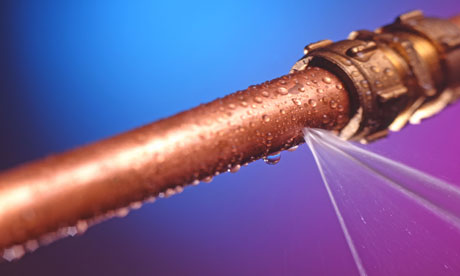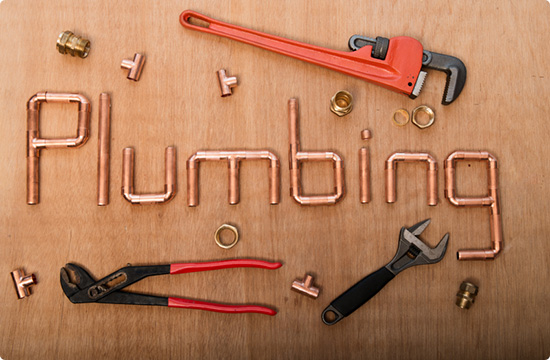Plumbing Sounds You Must Know About
Plumbing Sounds You Must Know About
Blog Article
Just how do you really feel on the subject of How To Fix Noisy Pipes?

To identify loud plumbing, it is necessary to establish first whether the unwanted noises happen on the system's inlet side-in various other words, when water is transformed on-or on the drain side. Noises on the inlet side have differed reasons: excessive water pressure, worn shutoff and faucet components, poorly connected pumps or other home appliances, improperly positioned pipeline fasteners, and plumbing runs including a lot of tight bends or other limitations. Sounds on the drainpipe side generally stem from poor location or, just like some inlet side noise, a design consisting of limited bends.
Hissing
Hissing sound that takes place when a tap is opened a little generally signals excessive water stress. Consult your neighborhood public utility if you presume this issue; it will be able to tell you the water pressure in your location as well as can install a pressurereducing valve on the inbound water pipeline if needed.
Other Inlet Side Noises
Creaking, squeaking, damaging, breaking, as well as touching generally are triggered by the growth or contraction of pipelines, normally copper ones supplying warm water. The noises occur as the pipelines slide against loose fasteners or strike neighboring home framing. You can commonly identify the place of the problem if the pipelines are subjected; simply comply with the sound when the pipelines are making noise. Probably you will find a loose pipeline hanger or an area where pipes exist so near to floor joists or various other framing pieces that they clatter against them. Affixing foam pipeline insulation around the pipes at the point of call need to treat the issue. Be sure bands and wall mounts are secure as well as provide adequate assistance. Where feasible, pipe bolts ought to be affixed to huge architectural elements such as structure walls rather than to mounting; doing so decreases the transmission of vibrations from plumbing to surface areas that can amplify as well as move them. If connecting bolts to framing is inevitable, cover pipes with insulation or various other resistant material where they contact bolts, and also sandwich the ends of brand-new bolts in between rubber washers when installing them.
Remedying plumbing runs that experience flow-restricting limited or numerous bends is a last option that ought to be undertaken only after seeking advice from a proficient plumbing service provider. Unfortunately, this situation is relatively typical in older homes that might not have actually been constructed with interior plumbing or that have actually seen a number of remodels, particularly by novices.
Babbling or Shrieking
Extreme chattering or shrieking that happens when a valve or faucet is turned on, and that generally goes away when the installation is opened fully, signals loose or defective inner parts. The service is to replace the valve or faucet with a new one.
Pumps and appliances such as washing machines and dishwashers can transfer electric motor sound to pipelines if they are incorrectly linked. Connect such products to plumbing with plastic or rubber hoses-never inflexible pipe-to isolate them.
Drain Sound
On the drainpipe side of plumbing, the principal objectives are to get rid of surface areas that can be struck by dropping or rushing water and to protect pipelines to have inescapable sounds.
In new building, tubs, shower stalls, commodes, as well as wallmounted sinks as well as containers need to be set on or versus resistant underlayments to lower the transmission of sound with them. Water-saving commodes and also faucets are less noisy than standard designs; mount them as opposed to older types even if codes in your area still permit utilizing older components.
Drains that do not run vertically to the basement or that branch into horizontal pipeline runs supported at floor joists or other mounting existing especially frustrating sound problems. Such pipes are huge sufficient to radiate significant resonance; they likewise bring substantial amounts of water, which makes the situation worse. In brand-new building and construction, specify cast-iron soil pipes (the big pipelines that drain pipes bathrooms) if you can manage them. Their enormity contains a lot of the noise made by water going through them. Additionally, avoid routing drains in wall surfaces shared with bed rooms and spaces where individuals collect. Walls including drains need to be soundproofed as was described earlier, utilizing dual panels of sound-insulating fiber board and wallboard. Pipes themselves can be wrapped with special fiberglass insulation produced the objective; such pipelines have an impervious vinyl skin (in some cases consisting of lead). Outcomes are not constantly acceptable.
Thudding
Thudding noise, commonly accompanied by shivering pipes, when a tap or device shutoff is switched off is a condition called water hammer. The noise and vibration are triggered by the resounding wave of stress in the water, which unexpectedly has no area to go. Occasionally opening up a shutoff that releases water promptly right into an area of piping consisting of a constraint, elbow, or tee fitting can create the very same problem.
Water hammer can usually be cured by mounting installations called air chambers or shock absorbers in the plumbing to which the problem valves or faucets are connected. These gadgets enable the shock wave produced by the halted circulation of water to dissipate airborne they have, which (unlike water) is compressible.
Older plumbing systems might have short upright areas of capped pipeline behind wall surfaces on tap competes the exact same purpose; these can eventually fill with water, reducing or destroying their effectiveness. The treatment is to drain pipes the water system completely by shutting down the primary water system valve and opening all taps. After that open up the primary supply valve and shut the faucets one at a time, starting with the tap nearest the valve and finishing with the one farthest away.
WHY IS MY PLUMBING MAKING SO MUCH NOISE?
This noise indeed sounds like someone is banging a hammer against your pipes! It happens when a faucet is opened, allowed to run for a bit, then quickly shut — causing the rushing water to slam against the shut-off valve.
To remedy this, you’ll need to check and refill your air chamber. Air chambers are filled with — you guessed it — air and help absorb the shock of moving water (that comes to a sudden stop). Over time, these chambers can fill with water, making them less effective.
You’ll want to turn off your home’s water supply, then open ALL faucets (from the bathroom sink to outdoor hose bib) to drain your pipes. Then, turn the water back on and hopefully the noise stops! If you’re still hearing the sound, give us a call to examine further.
Whistles
Whistling sounds can be frustrating, as sometimes the source isn’t easily identified. However, if you can pinpoint which faucet or valve that may be the cause, you’ll likely encounter a worn gasket or washer — an easy fix if you replace the worn parts!Whistling sounds from elsewhere can mean a number of things — from high water pressure to mineral deposits. Your best plan of attack here is to give our plumbing experts a call. We’ll be able to determine where the noise is coming from and what the cause may be, then recommend an effective fix!
Cracks or Ticks
Cracking or ticking typically comes from hot water going through cold, copper pipes. This causes the copper to expand resulting in a cracking or ticking sound. Once the pipes stop expanding, the noise should stop as well.
Pro tip: you may want to lower the temperature of your water heater to see if that helps lessen the sound, or wrapping the pipe in insulation can also help muffle the noise.
Bangs
Bangs typically come from water pressure that’s too high. To test for high water pressure, get a pressure gauge and attach it to your faucet. Water pressure should be no higher than 80 psi (pounds per square inch) and also no lower than 40 psi. If you find a number greater than 80 psi, then you’ve found your problem!
Next step is to give us a call in order to install a pressure regulator. Trust us, you don’t want to wait to resolve this issue. Not only is the sound annoying, but high water pressure can be destructive to your home — including damaging certain appliances, like your washer and dishwasher.
Dripping
You might be accustom to the slow quiet drip your kitchen faucet makes. You might have even tuned out your bathroom sink dripping and drabbing all day long — but it’s time to find its cause.
A slow drip could signify a variety of easy to fix issues, such as a worn out O ring, or loose part. And by ignoring the drip, you could be wasting up to 2,000 gallons of water a year! So start conserving water — get it looked at ASAP.
https://www.pwessig.com/blog/2018/december/why-is-my-plumbing-making-so-much-noise-/

I found that content on Why Do My Pipes Make Noises while doing a search on the search engines. Remember to take the opportunity to promote this write-up if you liked it. I am grateful for your time. Don't forget to visit our website back soon.
Schedule A Free Estimate Report this page